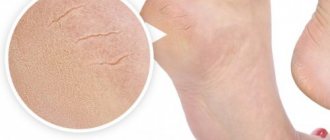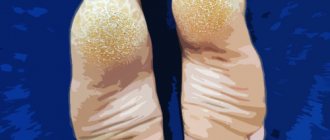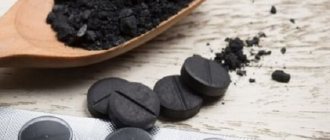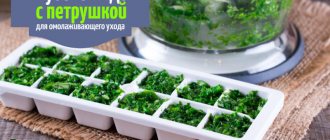Foot skin problems can be solved by a pedicurist or a qualified podiatrist. The skin is the largest and most vulnerable organ. Covers are constantly in contact with an aggressive environment and are exposed to mechanical and chemical influences. The body takes this into account and skin regeneration is one of the fastest processes.
We must help our body with proper care, nutrition, and hydration. Unfortunately, not everyone thinks about the importance of regular and competent care. The result is skin problems. Let's look at what problems there are and how to fix them.
Every day, feet are exposed to constant high loads. This is aggravated by the use of low-quality, incorrect and restrictive shoes and socks made of synthetic fabrics. As a result, foot skin pathologies occur in the majority of the population. An indifferent attitude towards cracked heels, dry and wet calluses, and regular peeling of the skin can lead to serious chronic diseases.
Many foot skin problems can be eliminated by a podiatrist. He will provide proper care, treatment of the skin, its hydration and nutrition, and give recommendations for prevention at home. If you do not use the services of a podiatrist in a timely manner, then in the future you will need the help of a surgeon - do not complicate the situation, take preventive measures in a timely manner.
Main skin problems on the feet
A podiatrist is regularly contacted with the following foot skin pathologies:
- calluses;
- cracks of different depths;
- dry skin;
- hyperhidrosis;
- corns;
- hyperkeratosis.
The specialist’s task is not only to identify the presence of pathology and select a method for eliminating it, but also to determine the causes of its occurrence - this will help carry out prevention and prevent the occurrence of pathologies in the future.
If you have fungus on your feet, what should you do?
Have you ever tried to get rid of foot and nail fungus on your own? If yes, then you are familiar with the feeling of unbearable itching near the nail, burning between the fingers, and peeling of the skin.
However, this is only a small part of the symptoms of the initial stage of onychomycosis. According to statistics, about 30% of people in Russia suffer from fungal infections of the feet and nails, and the majority consider fungus only a cosmetic defect that does not pose a serious health hazard.
A fungus is an infectious lesion of the skin, a microorganism that parasitizes the human body, resulting in the development of lesions of the skin, its appendages and internal organs.
If you encounter this unpleasant problem, you should definitely consult a doctor. As a rule, a dermatologist treats fungal infections. After examining the patient, a thorough examination and establishing the correct diagnosis, the doctor prescribes adequate treatment. Most often, specialists prescribe external agents and tablet antifungal drugs. The dosage and duration of treatment are selected individually.
You may be interested in: “Elastic body. How to make your body elastic and toned in 10 minutes"
What are foot cracks?
Cracks in the epidermal layer appear on the outer skin and can extend deep into the dermis. Heels are a typical localization area.
Main causes of cracks
- leg injuries and mechanical damage;
- improperly performed pedicure;
- lack of regular skin care;
- dry skin;
- diseases of the digestive system;
- past fungal diseases;
- diabetes;
- taking antibiotics;
- psoriasis;
- dehydration of the body;
- strict diet without supervision by specialists;
- thyroid disease;
- hormonal changes, taking hormonal medications.
The appearance of cracks in the legs can be seasonal or chronic.
A pedicurist will be able to cope with cracks, but an integrated approach requires the help of an endocrinologist, dermatologist, gastoenterologist or immunologist. The master recommends specialists from whom you can get advice.
According to statistics, 70% of cracks are infected with fungi. It is recommended to visit a dermatologist, do tests and identify the type of fungus. This will help you choose a course of treatment for quick and safe skin recovery.
The specificity of fungal cracks is a green or brown tint. A pedicurist immediately sends a client with such a pathology to dermatologists. It is not possible to cure the infection yourself without determining the type of fungus at home. The help of a cosmetologist will not help either - removing the area without an integrated approach can lead to the spread of the disease.
Prevention of corns
It is better to prevent any disease than to treat it. To avoid the appearance of corns you need to:
Buy only high-quality shoes in the right size;
- When choosing hosiery, preference should be given to products made from natural fabrics;
- Limit movement or minimize movement in high-heeled shoes to reduce the load on your feet.
Carry out preventive procedures using the listed folk remedies. Regular home foot care and timely removal of compactions is the basic rule for maintaining the beauty and health of your feet.
Treatment of cracks during pedicure
Hardware dry and combined pedicures work well with cracks. To eliminate pathologies, it is not recommended to carry out intensive softening by wetting. With deep tears, it is difficult to work with skin that has collected water.
Deep cracks are removed in 3-7 sessions. The procedure necessarily ends with treatment with nutritional compositions and healing agents. The client is given recommendations for care and, if necessary, demonstrated care procedures.
Main stages
treatment of cracks during combined pedicure:
- Treatment with antiseptic compounds.
- Treatment with keratolics, which contain enzymes and urea.
- The treated area is covered with a napkin for 5-10 minutes.
- Hardware processing with cutters of different hardness. Recommended tips are 100, 150 and 280 grit.
- Processing with a diamond cutter - the master forms a truncated cone in the direction of the crack. This helps open the crack and remove dry edges.
- Removing dust from feet using antiseptic compounds.
- Application of urea or wax based compounds that promote rapid healing.
During a pedicure, the area of skin affected by hyperkeratosis is usually removed.
At home, to increase the rate of acceleration, cracks are treated overnight with wax-based products. During the day, feet are regularly moisturized with nourishing creams. If wax-based products are not available, you can use Vaseline. To improve effectiveness, after treatment overnight, the cracks are covered with polyethylene and a cotton sock is put on.
Recipes for home care for feet and heels
Foot baths, compresses and peeling are easy to make yourself using natural ingredients. We are happy to share the most effective recipes.
Foot baths
- Milk-soap bath . Fill a container with warm water at a comfortable temperature no higher than 40 degrees. Add half a liter of milk and a tablespoon of soap crumbs. Take a bath for about 15-20 minutes until the water cools down.
- Bath against profuse sweating . Brew 2 tea bags for every liter of water, wait until the temperature of the “tea” becomes comfortable and dip your feet in the resulting decoction. Black tea has the ability to tighten pores and also contains tannins that reduce sweating.
- Soda bath for corns . Dissolve 2 tbsp in water. spoons of baking soda and 1 tbsp. a spoonful of soap or shower gel. Take a bath for 15-20 minutes. The shower gel in this recipe can be replaced with sea salt, and you can also add your favorite essential oils.
- Lemon bath . Lemon juice destroys the stratum corneum of the skin and works as an acid peel. Dilute lemon juice with water in a ratio of 1:10. Add the resulting mixture to warm water and soak your feet for 10 minutes. Afterwards, rinse your skin with water to avoid drying out.
Home peeling
- Coffee peeling . Ground coffee is one of the main exfoliating ingredients in natural cosmetics. It improves blood circulation and also stimulates the production of collagen and elastin for renewed and firm skin. Mix 1 tbsp. spoon of coffee, 1 tbsp. a spoonful of cocoa and the same amount of cinnamon. Add 150 ml of any oil (olive, grape seed, macadamia) and tbsp. a spoonful of Dead Sea salt. Apply to skin with massaging movements, rinse after 10 minutes. If desired, you can use ready-made coffee scrub “Coffee Cocktail”.
- Classic salt peeling . Mix 50 gr. Dead Sea salt or Himalayan salt with 1 tbsp. spoon of olive oil. Add 5 drops of tea tree or lavender essential oil. Massage the mixture onto your feet and leave for a few minutes. Afterwards, rinse with warm water and apply cream.
- Kefir peeling . Heat 100 ml of kefir to 39 degrees, pour into a bag and lower your feet there for 2 hours. Afterwards, rinse off the residue with water and you can start sanding.
- Citrus peeling . Fruit acids perfectly soften rough skin and saturate it with vitamins. Any citrus fruits that you can find in the kitchen are suitable for peeling: orange, grapefruit, lemon, lime, tangerine. Grind a fruit weighing about 200 grams in a blender instead of peel and seeds. Add a sprig of finely chopped mint. Apply the mixture to rough areas of the skin and leave for 10 minutes, then rinse with water. Repeat acid peeling every week. The Slim Citrus mixture is also suitable for citrus peeling.
Foot compress
- Honey compress for the night . Mix a tablespoon of honey with 2 tablespoons of flour. Form a dense cake from the resulting mass and apply it to the steamed legs, covering the top with film. It is advisable to leave the compress overnight.
- Moisturizing compress with aloe juice . Mix aloe juice with onion juice and olive oil in equal proportions. Apply the mixture to your feet, cover with foil and go to bed.
- Softening compress with vinegar and glycerin . Glycerin is loved by cosmetologists for its ability to quickly heal wounds, moisturize and soften the skin. Mix 2 tbsp. tablespoons of pharmaceutical glycerin with an equal amount of 9% apple cider vinegar. Apply the solution to gauze and apply to areas of rough skin. Leave for several hours or overnight, covering with film and warm socks.
- Onion compress for rough skin on heels . For the recipe you only need one medium onion. Cut it in half, apply it to your heels and secure it with film and leave it overnight, putting socks on top. In the morning, throw away the onion, wash and file your heels.
Mask for feet and heels
- Nourishing potato mask . Mash the warm boiled potatoes with a fork and apply the resulting puree in a thick layer to your feet. Cover with cling film for half an hour, then rinse with warm water and apply your favorite cream.
- Moisturizing oatmeal mask . You will need 2 tbsp. spoons of oatmeal, 2 tbsp. spoons of olive oil and a spoonful of honey. Mix the ingredients thoroughly and apply to your feet. Cover with cling film and rinse with warm water after half an hour.
- Softening mask with semolina . Mix 2 tbsp. spoons of sea salt, 1 tbsp. spoon of honey, 1 tbsp. a spoonful of sour cream and half a glass of semolina. Apply the resulting mixture to your feet for 20 minutes, then rinse with warm water.
- Cleansing mask with Dead Sea salt . Mix Dead Sea salt and olive oil in equal quantities, add a teaspoon of cinnamon. Apply to skin with massaging movements, rinse after 10 minutes.
Calluses: causes and methods of removal
A callus is formed by compaction of dead skin cells. They are distinguished by strictly defined and clearly visible boundaries, and can be dry or wet.
The main reasons for the formation of calluses:
- wearing uncomfortable and tight shoes;
- hard backs of shoes;
- wearing shoes without socks;
- irregular foot skin care;
- foot deformity;
- lack of care procedures.
Most calluses cause pain, discomfort, and are a source of infection.
Core calluses cannot be eliminated at home; a visit to a podiatrist is necessary. The pathology forms in the area of the fingers or foot and has a deep, pinpoint root canal. These calluses are often affected by fungus.
Effective elimination is only possible with an understanding of the cause of the formation. Dry calluses are removed by a pedicurist, who pre-soaks the skin and removes the growth with a nail file. Wet calluses require an exclusively individual approach.
What are the advantages of hardware pedicure
This method is becoming increasingly popular due to its undoubted advantages:
- there is no risk of cuts;
- cutters are easy to disinfect, and disposable attachments simplify the procedure;
- suitable for delicate, irritation-prone skin;
- excellent results for a month in advance;
- high processing speed;
- copes well with most problems specific to the feet;
- does not require baths or the use of chemical softeners;
- has no contraindications.
The only disadvantage of the technique is the need to buy a good router and learn how to work with it.
Corns: features and treatment
Corns resemble calluses, but are irregular in shape, large in size, have jagged edges, and are highly dense. The main means of combating corns is a combined pedicure. Cosmetologists use keratolic agents, which have a softening effect, and devices with attachments of varying degrees of abrasiveness.
The main causes of corns:
- low-quality, uncomfortable shoes;
- foot deformity;
- improper regeneration of the skin of the foot;
- dehydration and strict diets.
The regular appearance of corns, regardless of the shoes used, is a reason to visit an orthopedist.
The main stages of eliminating corns:
- visiting a pedicurist who will file the damaged area. The procedure is performed in several stages;
- daily home care;
- wearing shoes with orthopedic insoles;
- scheduled visit to a podiatrist.
With the help of a hardware pedicure, you can remove a small corn in one session. Large and dense ones are removed gradually, since if a significant area is removed in one procedure, the regeneration process is activated and the corns increase in size.
Which foot bath to choose?
The secret of the effectiveness of the baths lies in their natural composition, rich in magnesia and beneficial acids. The product is ideal for relieving fatigue and swelling, reducing inflammation, relieving pain after sports, moisturizing and nourishing the skin, preparing for a pedicure, as well as for people suffering from skin diseases. Epsom offers two foot baths that may interest you:
Foot bath “Foot Pleasure” with mint and lemon essential oil relaxes, relieves swelling and moisturizes the skin of the feet. A cooling bath will soothe discomfort and relieve swelling after sports or high heels, and the invigorating aroma of mint and lemon will instantly lift your spirits.
Epsom salt relaxes muscles, relieves pain and spasms. Salt removes excess fluid, quickly reducing swelling.
Sea salt relieves inflammation, promotes skin regeneration, healing of calluses and small wounds. Baths with sea salt reduce sweating and stop the development of nail fungus.
Lemon and mint essential oil restores tone to the legs, refreshes and relieves fatigue.
Tea tree essential oil has anti-inflammatory and antiseptic properties, improves blood circulation and fights fungus.
Sage essential oil soothes and heals damaged skin.
Macadamia oil nourishes and softens the skin, moisturizes the cuticle and takes care of the delicate skin of the feet.
Epsom Relax foot bath with chamomile and lavender essential oil nourishes the skin, relaxes muscles and relieves nervous tension. A warm evening bath with the aroma of lavender will give your feet lightness and comfort.
Epsom salts soothe muscles and relieve pain and spasms. Salt removes excess fluid, quickly reducing swelling.
Dead Sea salt relieves inflammation, reduces sweating, promotes the healing of small wounds, and effectively fights fungus.
Himalayan salt softens calluses and corns, accelerates skin regeneration, and tones.
Lavender essential oil soothes the skin and nervous system, helps you relax and fall asleep faster.
Tea tree essential oil has anti-inflammatory and antiseptic properties, improves blood circulation and fights fungus.
Chamomile extract relieves irritation and itching, soothes the skin after insect bites.
Macadamia oil nourishes and softens the skin, moisturizes the cuticle and takes care of the delicate skin of the feet.
What is hyperhidrosis
Hyperhidrosis is increased sweating, which leads to the formation of skin pathologies. An area with constant high humidity and a temperature comfortable for the growth of bacteria is created in the foot area. This causes an unpleasant odor and peeling of the skin in large areas.
The main reasons for the development of hyperhidrosis:
- disorders of the thyroid gland;
- wearing uncomfortable shoes with poor ventilation;
- the use of low-quality creams based on synthetic bases that form an airtight film on the surface of the skin.
The main problem with hyperhidrosis is thick and swollen skin. It is difficult to process using hardware methods. To relieve the main symptoms, it is recommended to sprinkle the damaged areas with baby powder or talcum powder.
To treat hyperhidrosis, alcohol-based antiseptic formulations are used. The treatment can be done in a beauty salon. After hygienic treatment, the feet are wiped and treated with talcum powder. Prepared feet are processed using hardware methods using cutters with a hardness of 100-280 grit. After completing the procedure, the master will definitely give recommendations.
General recommendations:
- use a deodorant recommended by a specialist;
- wear shoes and clothes made from natural materials;
- take good care of your shoes;
- Perform regular foot hygiene procedures at least twice a day.
- Pay special attention to the condition of the insoles.
Method number 5: natural honey
How to get rid of rough skin on your heels using honey. Honey is a natural antiseptic that combines an emollient and nourishing cosmetic to improve the condition of the skin of the face and body.
When cleansing the skin of the feet, to speed up the effect, use not pure honey, but a mixture of it with viburnum or prunes. When exposed to honey, rough keratinized layers noticeably peel off, releasing clean epithelium and eliminating inflammatory processes from the skin. Viburnum is a real storehouse of microelements that stimulate the growth of young layers of epithelial tissue.
How to easily and quickly remove rough skin from your heels using a compress:
- Crush 50 g of viburnum berries, after removing the seeds, and mix with half a glass of honey;
- Before applying, the paste should be heated in a water bath until warm;
- the mixture is applied to a bandage or natural fabric and applied to the heels;
- To obtain a compress effect, the legs are wrapped in cellophane and wrapped in a blanket for 30 minutes.
In a similar way, it is useful to use prunes instead of viburnum. A mixture of honey and prunes breaks down the thick dead skin layers of damaged skin, and acts as a chemical peel to remove rough skin on the heels. The skin begins to come off in large pieces, leaving the smooth surface of the feet free.
The advantage of this method is absolute safety and painlessness. Compresses with honey can be applied daily without harm to the feet. The duration of the course is extended until the desired effect is achieved.
Hyperkeratosis, dryness and flaking
Hyperkeratosis is a thickening of the stratum corneum. A layer of 1 to 10 mm is formed on the feet. The thickening is aggravated by the appearance of cracks, chronic formation of calluses and corns.
Excess weight, poor hygiene and the use of shoes made of synthetic materials are the main triggers of hyperkeratosis, among other reasons:
- genetic factor;
- age-related changes in the body;
- fungal infection;
- improper care of the skin of the feet;
- disturbances in the functioning of the endocrine system.
You can remove the effects of hyperkeratosis in a beauty salon. The pedicurist uses a combined technique, which includes the use of softeners and hardware treatment.
The maximum effect when removing rough skin is achieved when using cutters with an abrasiveness of 100-280 grit. The master gradually reduces the abrasiveness using different attachments.
Recommendations:
- using comfortable shoes;
- regular foot care with moisturizing creams;
- use of socks and shoes made from natural materials;
- regular visits to the podiatrist.
To combat dryness and flaking of the skin, urea-based products are used. The beauty parlors offer a procedure called cold paraffin therapy. A good effect is achieved by using wax applications and nourishing masks.
It is important not only to eliminate a cosmetic defect, but also to identify the causes of its occurrence and ensure proper prevention. If necessary, the podiatrist will give recommendations and refer you for consultations to specialized specialists to identify the cause of the defect.
How to Cleanse Rough Skin with Foot Baths
A relaxing foot bath with salt and oils is a complete spa treatment that you can do at home at any time. By following the instructions, you will soften rough skin, relieve fatigue and enjoy foot care.
First you need to fill a container with hot water at a comfortable temperature, about 37-39 degrees. Dissolve the bath mixture in it at the rate of 1 tablespoon for every liter of water. 15-20 minutes are enough to steam the skin. Don't keep your feet in the water for too long, otherwise the water will cool down and you will get the opposite effect.
After steaming, you can start working with a file, grater and pumice. There may be a lot of skin at first, don't let that worry you.
Finish the treatment with a relaxing foot massage. Stretch each foot separately, rubbing it from heel to toes and back. Rub and twist each finger. Press the edges of your foot several times. Apply precise pressure and rub your foot, moving through all areas from the heel to the toes. Massage the heel with circular movements and pinching. At the end, you can stroke it and twist your leg a little in the joint.
After such a massage, local blood circulation in the feet improves, fatigue and swelling go away, and the skin well absorbs all the beneficial substances from the oil or cream. At night, the body undergoes the most active regeneration, so we recommend performing the procedure before bed.
Avoid serious problems
A wide range of dermatoses develops in patients with diabetes mellitus. A number of pathologies are harbingers of this disease, others are a consequence. In total, up to 30 types of dermatoses with different clinical pictures are registered in diabetes mellitus.
All of the above diseases require professional and long-term treatment. It is recommended not to let your feet get into a condition that would require going to a hospital or clinic. It is necessary to regularly engage in the prevention of foot skin diseases. To do this you need:
- take care of your feet using products recommended by a cosmetologist;
- keep feet clean and dry;
- wipe the skin between the toes well after hygiene procedures;
- change socks twice a day, do not use synthetic shoes;
- wear only personal items.
People with chronic diseases are recommended to visit a podiatrist once every six months to receive professional care procedures.
How to clean your heels from rough skin at home with hydrogen peroxide
To carefully remove dead particles from the skin of the feet, you need to soak a cotton swab in hydrogen peroxide and water, taken in a ratio of 1: 3. Wipe the damaged areas with the resulting solution.
After 5 minutes, the skin on your feet will become softer and can be easily removed using a pumice stone or a scrub with large particles. Dry your feet and lubricate them with rich cream. This procedure will be effective for slightly damaged areas of the skin.
General recommendations
There are several rules that are very important to follow in order to maintain the beauty and tenderness of your feet.
It is best to start cleansing your feet in the evening. Well-groomed feet will rest well overnight and absorb all the beneficial components of the mask or compress. The active ingredients of the masks, left on the skin for several hours, will work very effectively.
If you need to remove corns, then under no circumstances should you use sharp objects. A razor or scissors can easily injure your feet, which can lead to the development of various inflammations.
It is very important to take care of your feet regularly. You can also use store-bought cosmetics, although no one doubts the effectiveness of folk recipes. An integrated approach to foot care will allow you to make your heels as soft as a child’s.
Cleaning your feet with aspirin
Some home recipes suggest off-label use of medications. For example, regular aspirin, which perfectly softens the skin, will help remove corns.
The effectiveness of aspirin in the fight for softness and smoothness of heels is due to acetylsalicylic acid in its composition. This substance is very often used for peeling.
Aspirin will help cope with the following symptoms:
- dry skin;
- cracked heels;
- corns;
- painful sensations.
To quickly get your feet in order, you only need 10 aspirin tablets. The drug should first be crushed to a powder state and then mixed with 250 ml of ethyl alcohol. You still need to add 1 bottle of iodine to the resulting solution. This mixture can be stored in a dark place for a week.
119 best hair masks
The resulting liquid is used to make foot lotions. To do this, a gauze napkin is soaked in the mixture and tied to the heels. It is better to keep the lotion all night. In the morning, the remnants of the product are easily washed off with water, and the feet are treated with pumice. After the procedure, the skin must be lubricated with a nourishing cream.











